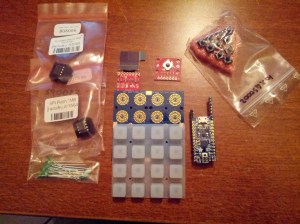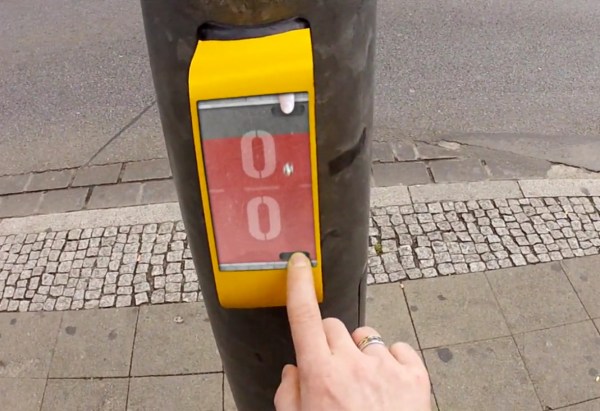We’re getting all sorts of entries in the Trinket Everyday Carry Contest! Today we’re featuring just a couple of the awesome entries dedicated to creating music!
 [johnowhitaker] is hard at work on A Musician’s Assistant. [John] is creating a device that does anything a practicing musician might need on the go. The Musician’s Assistant will include a metronome, tap/temp counter, and tuner. He’s hoping to also give it the ability to play back arbitrary notes using the Pro Trinket’s on-board ATmega328. [John] is trying to do all this with just LEDs and buttons as a user interface, though he is willing to go to an LCD or OLED if he needs to.
[johnowhitaker] is hard at work on A Musician’s Assistant. [John] is creating a device that does anything a practicing musician might need on the go. The Musician’s Assistant will include a metronome, tap/temp counter, and tuner. He’s hoping to also give it the ability to play back arbitrary notes using the Pro Trinket’s on-board ATmega328. [John] is trying to do all this with just LEDs and buttons as a user interface, though he is willing to go to an LCD or OLED if he needs to.
 [Michele Perla] is working on BitMasher, portable lo-fi music sequencer. The BitMasher will allow a musician on the go to create music anywhere. [Michele] began with a SID based sequencer in mind, but he’s currently trying to do it all on the Pro Trinket. He’s already got [Roman’s] BTc Sound Compression Algorithm working on an Arduino Leonardo. Lo-Fi for sure, but that’s what makes BitMasher fun! [Michele] envisions the song entry to be similar to that of the classic Roland TR-808. The primary user interface will be an Adafruit Trellis 4×4 button+LED driver board.
[Michele Perla] is working on BitMasher, portable lo-fi music sequencer. The BitMasher will allow a musician on the go to create music anywhere. [Michele] began with a SID based sequencer in mind, but he’s currently trying to do it all on the Pro Trinket. He’s already got [Roman’s] BTc Sound Compression Algorithm working on an Arduino Leonardo. Lo-Fi for sure, but that’s what makes BitMasher fun! [Michele] envisions the song entry to be similar to that of the classic Roland TR-808. The primary user interface will be an Adafruit Trellis 4×4 button+LED driver board.
Don’t forget that our second random drawing will be held on Tuesday, December 9th, at 9pm EST. To be eligible you need to submit your project as an official entry and publish at least one project log during the week. This week’s prize is a Cordwood Puzzle from The Hackaday Store. Check out the contest page for the full details!

















